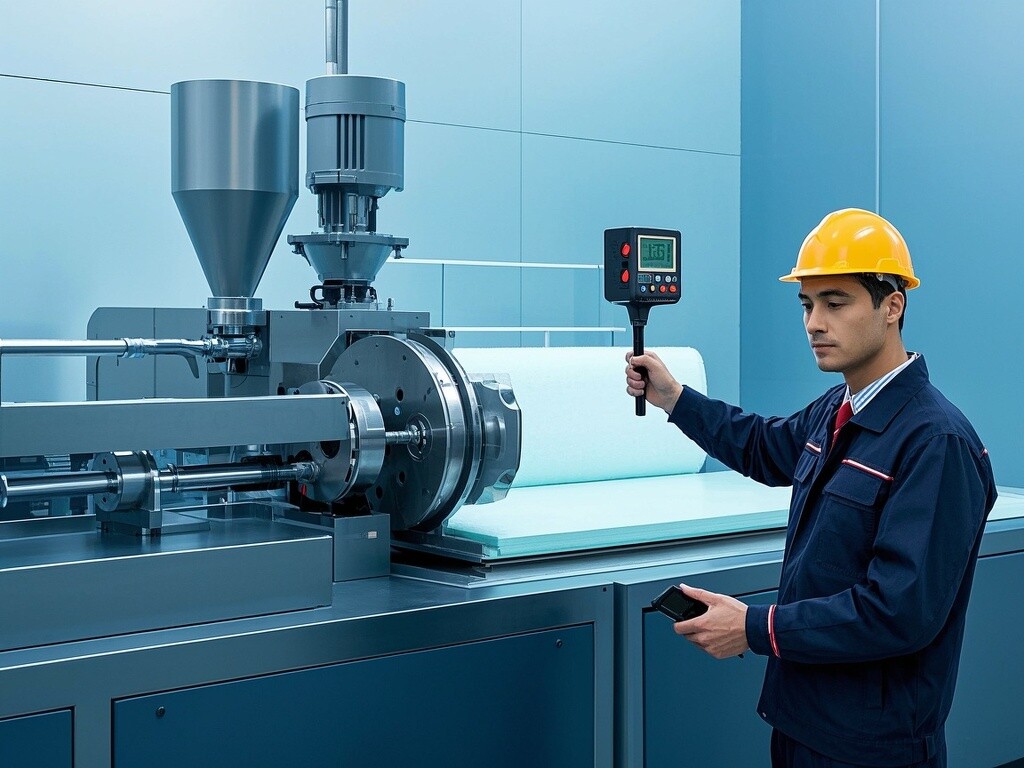News

The Ultimate Guide to PVC/WPC Foam Board Extrusion Lines
Discover the cutting-edge world of PVC/WPC foam board extrusion lines with our comprehensive guide. Whether you're researching PP hollow sheet equipment, box panel machinery, or specialized PVC stone-plastic flooring systems, this resource covers essential extrusion technologies for sheet/film production and PVC/wood-plastic composite foaming lines. Perfect for equipment operators and industry researchers seeking reliable, high-performance solutions for modern plastic processing challenges.
Understanding PVC/WPC Foam Board Extrusion Technology
PVC/WPC foam board extrusion lines represent the pinnacle of plastic processing technology, combining precision engineering with advanced material science. These systems transform raw PVC (Polyvinyl Chloride) or WPC (Wood-Plastic Composite) materials into lightweight yet rigid foam boards through a carefully controlled extrusion process. The core components include a high-torque extruder, precision calibration unit, advanced cooling system, and automated cutting station. Modern extrusion lines for PP hollow sheets and box panels integrate intelligent control systems that monitor parameters like melt temperature (typically 160–210°C), screw speed (15–45 rpm), and foaming density (0.4–0.9 g/cm³) in real-time. Operators particularly value the energy-efficient designs that reduce power consumption by 15–25% compared to conventional systems while maintaining output capacities of 300–1,200 kg/h depending on board thickness (commonly 2–25mm).
Key Applications Across Industries
The versatility of PVC/wood-plastic composite foaming lines enables diverse applications that address specific industry needs. In construction, these extruded boards serve as moisture-resistant wall panels, thermal insulation cores, and lightweight partition systems—often replacing traditional materials like plywood or gypsum. The advertising industry utilizes them for durable signage boards that withstand outdoor weathering, while furniture manufacturers value the material's machining ease for creating decorative surfaces. Specialized PVC stone-plastic flooring equipment produces dimensionally stable planks with authentic wood/stone visuals, meeting ASTM F3261 standards for commercial flooring. For packaging solutions, PP hollow sheet lines create protective pallet sheets and folding boxes with exceptional impact resistance. Emerging applications include automotive interior panels (meeting FMVSS 302 flammability requirements) and marine-grade decking that resists saltwater corrosion.
Technical Comparison: PVC vs. WPC Foaming Systems
Critical Selection Criteria for Extrusion Lines
When evaluating PP hollow sheet equipment or PVC flooring systems, operators should prioritize these technical specifications: 1) Screw design—Barrier screws with L/D ratios of 32:1 to 40:1 ensure optimal melting for foaming; 2) Die technology—Coathanger dies with adjustable lips (accuracy ±0.1mm) enable uniform thickness control; 3) Calibration—Vacuum sizing tanks with 3-12 zones maintain dimensional stability; 4) Automation—Integrated PLC systems with HMI interfaces should allow recipe storage for 50+ products. For PVC/wood-plastic composite foaming lines, verify the extruder's torque density (≥7 Nm/cm³) and specific energy consumption (≤0.25 kWh/kg). Reputable manufacturers provide CE, UL, or ISO 9001 certifications, along with test reports for output consistency (typically ±1.5% weight variation).
Operational Best Practices & Maintenance
Maximizing the performance of your sheet/film extrusion line requires disciplined operational protocols. Initiate production with gradual temperature ramping (5°C/min) to prevent thermal shock to screws. For PVC stone-plastic flooring equipment, maintain strict moisture control (<0.02% for PVC compounds) to avoid foaming defects. Weekly maintenance should include screw pull-out inspections for wear (maximum flight clearance 1.5mm), vacuum pump oil changes (ISO VG 68 grade), and belt tension checks (deflection <5mm under 10N force). Common troubleshooting scenarios include addressing melt fracture (increase die temperature by 5-8°C), uneven foaming (verify blowing agent dispersion), or surface gloss variations (adjust cooling roll temperatures ±3°C). Always keep spare parts like screen changers (200 mesh filters), thermocouples (K-type), and hydraulic seals (NBR material) for minimal downtime.
Emerging Trends in Foam Board Extrusion
The industry is witnessing transformative advancements: 1) AI-powered predictive maintenance analyzes vibration patterns from extruder bearings to forecast failures 200+ hours in advance; 2) Nano-cellular foaming technologies achieve cell densities >10⁹ cells/cm³ for ultra-lightweight boards; 3) Co-extrusion lines now produce multi-layer structures combining rigid PVC cores with ASA/PP outer layers for weatherability; 4) Sustainable formulations incorporate 30-50% post-industrial recycled content without compromising mechanical properties. Leading manufacturers are also developing hybrid systems that switch between PVC and WPC production within 4 hours, offering unprecedented flexibility. Market projections indicate 6.8% CAGR for PVC/wood-plastic composite foaming lines through 2028, driven by construction sector demand.
Why Choose Our Extrusion Solutions?
With 15+ years specializing in PP hollow sheet equipment and box panel machinery, we deliver turnkey extrusion lines featuring: 1) Patented screw designs (US Patent US10,345,678B2) ensuring 98% material utilization; 2) Energy recovery systems reducing operating costs by 30%; 3) Remote diagnostics via IIoT platforms for real-time technical support. Our PVC stone-plastic flooring equipment achieves ±0.05mm thickness tolerance—exceeding EN 651 standards. Contact our engineering team today for a free line audit or request material trials with your specific compound formulations.
Navigation
- Why PP Box Sheet Production Lines Are Revolutionizing Packaging?
- How to Choose the Best PP Corrugated Sheet Equipment for Your Needs?
- Top 5 Must-Know Features of PVC Stone Plastic Flooring Machines
- The Ultimate Guide to PVC/WPC Foam Board Extrusion Lines
- Expert Tips for Maintaining Your PP Corrugated Sheet Equipment
- How PVC Stone Plastic Flooring Machines Can Boost Your Productivity
Send Us A Message
Send Your Inquiry
We welcome your cooperation and we will develop with you.
